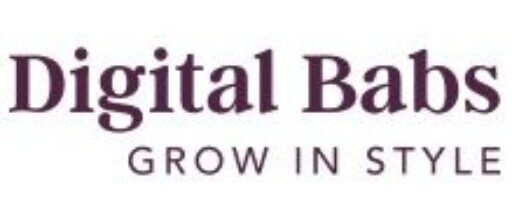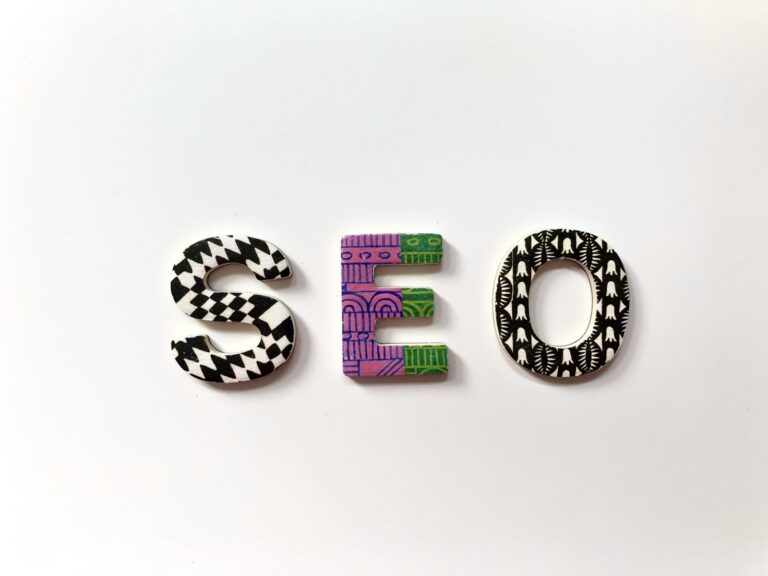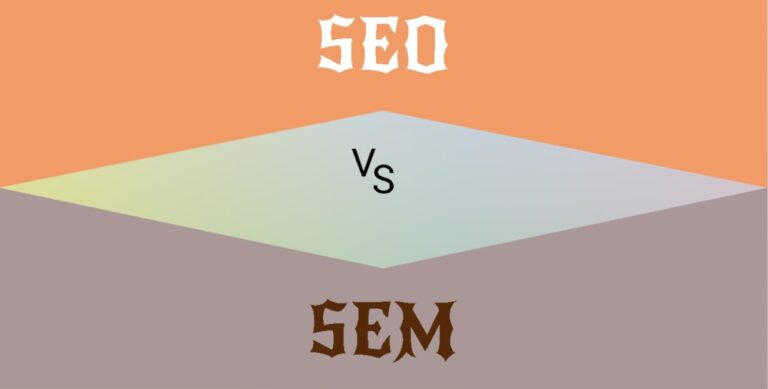Unlocking the Power of Linkable Assets: How to Create Content That Attracts Backlinks and Boosts Your SEO
In the ever-evolving landscape of digital marketing, the importance of backlinks cannot be overstated. They serve as endorsements, signaling to search engines that your content is credible and valuable. But how do you attract these coveted backlinks? The answer lies in linkable assets—content so compelling that others can’t resist sharing it. From interactive infographics to in-depth guides, linkable assets can transform your website’s visibility and authority. In this article, we’ll delve into strategies for creating content that not only resonates with your audience but also naturally attracts backlinks, ultimately boosting your SEO. Unlock the power of linkable assets and watch as your website climbs the search engine rankings, establishing your brand as a trusted resource in your niche. Get ready to elevate your content game and harness the full potential of backlinks for a more powerful online presence.
Understanding Linkable Assets: What Are They?
Linkable assets are high-quality, valuable pieces of content designed to attract backlinks from other websites. These assets can take various forms, such as blog posts, infographics, videos, eBooks, or research studies. The key to a successful linkable asset is its ability to provide exceptional value to your target audience, thereby encouraging other websites to link back to it. This value could come from solving a problem, providing in-depth information, presenting data in an easy-to-understand format, or offering a unique perspective on a topic.
The concept of linkable assets hinges on the idea that when you create something truly valuable and informative, others will naturally want to share it with their audiences. This sharing often comes in the form of backlinks, which are links from other websites pointing to your content. These backlinks not only drive direct traffic to your site but also signal to search engines that your content is authoritative and trustworthy.
Understanding what makes a piece of content a linkable asset is crucial for any digital marketing strategy. It’s not enough to simply create content; the content must be crafted with the intent and potential to attract links. This means focusing on quality, relevance, and usefulness above all else. By doing so, you increase the likelihood that other webmasters, bloggers, and influencers will find your content valuable enough to link to, thereby enhancing your SEO efforts.
The Importance of Backlinks in SEO
Backlinks are one of the most significant factors in search engine optimization (SEO). They act as votes of confidence from one site to another, signaling to search engines like Google that your content is worthy of attention. When numerous reputable websites link to your content, it tells search engines that your site is a valuable resource. This, in turn, can improve your site’s ranking in search engine results pages (SERPs).
The quality of backlinks matters just as much as the quantity. Links from high-authority sites are more valuable than links from lesser-known or lower-quality sites. These high-quality backlinks can substantially boost your domain authority and improve your chances of ranking higher for competitive keywords. Moreover, backlinks contribute to the overall link profile of your website, which is a critical factor in how search engines evaluate your site’s relevance and authority.
In addition to improving your search engine rankings, backlinks also help drive referral traffic to your site. When a user clicks on a backlink, they are directed to your content, increasing your site’s visibility and potential audience. This can lead to higher engagement rates, more conversions, and ultimately, greater business success. Therefore, investing time and resources into creating linkable assets that attract backlinks is a smart strategy for any website looking to enhance its SEO performance.
Types of Linkable Assets to Consider
There are several types of linkable assets you can create to attract backlinks and boost your SEO. Each type has its own unique advantages and can appeal to different segments of your target audience. Understanding these types and their potential impact can help you choose the right linkable assets for your content strategy.
One popular type of linkable asset is the in-depth guide or tutorial. These comprehensive resources provide detailed information on a specific topic, offering step-by-step instructions, tips, and insights. Because they are highly informative and useful, they are often referenced and linked to by other websites. Creating a well-researched and thorough guide can position you as an authority in your niche and attract valuable backlinks.
Infographics are another effective type of linkable asset. These visual representations of data and information are easy to understand and share, making them highly linkable. Infographics can present complex information in an engaging and digestible format, which can be particularly appealing to audiences that prefer visual content. By designing eye-catching and informative infographics, you can increase the likelihood of other websites linking to your content.
Other types of linkable assets include original research and case studies. These assets provide unique insights and data that can’t be found elsewhere, making them highly valuable to others in your industry. By conducting your own research or sharing detailed case studies, you can create content that is not only informative but also authoritative. This can lead to more backlinks from websites that want to reference your findings and insights.
Characteristics of High-Quality Linkable Assets
Creating a high-quality linkable asset involves several key characteristics that make the content valuable and appealing to others. Understanding these characteristics can help you craft content that stands out and attracts the backlinks you need to boost your SEO.
First and foremost, a high-quality linkable asset must be highly relevant to your target audience. This means addressing their needs, interests, and pain points in a meaningful way. Content that resonates with your audience is more likely to be shared and linked to by others. Conducting thorough audience research and understanding their preferences can help you create content that hits the mark.
Another important characteristic of a high-quality linkable asset is originality. Unique content that offers a fresh perspective or new information is more likely to attract attention and backlinks. Avoid rehashing existing content and instead focus on providing something new and valuable. This could be through original research, unique insights, or innovative approaches to common problems.
Finally, high-quality linkable assets are often well-designed and easy to consume. This includes clear and concise writing, engaging visuals, and a logical structure. Content that is visually appealing and easy to navigate is more likely to be shared and linked to by others. Investing in professional design and ensuring your content is user-friendly can go a long way in making your linkable assets more attractive to other websites.
How to Identify Your Target Audience for Linkable Assets
Identifying your target audience is a crucial step in creating linkable assets that resonate and attract backlinks. Without a clear understanding of who your audience is, it’s challenging to create content that meets their needs and interests. Here are some strategies to help you identify your target audience for linkable assets.
Start by analyzing your existing audience. Look at your website analytics to see who is visiting your site, what content they are engaging with, and where they are coming from. This data can provide valuable insights into the demographics, interests, and behaviors of your audience. Use this information to create detailed audience personas that represent your ideal readers.
Next, conduct market research to understand the broader audience in your niche. This can include surveys, interviews, and social media listening. Ask your audience directly about their challenges, preferences, and what types of content they find most valuable. This feedback can help you tailor your linkable assets to better meet their needs and increase the likelihood of attracting backlinks.
Finally, analyze your competitors to see what types of content are attracting backlinks in your industry. Look at their most popular and linked-to content to identify trends and gaps that you can capitalize on. By understanding what is working for others, you can create linkable assets that offer even more value and stand out in the crowded digital landscape.
Strategies for Creating Compelling Linkable Content
Creating compelling linkable content requires a strategic approach and a deep understanding of what makes content valuable to your audience. Here are some effective strategies to help you create content that naturally attracts backlinks.
One strategy is to create comprehensive, in-depth content that covers a topic thoroughly. This type of content, often referred to as “pillar content” or “cornerstone content,” provides a wealth of information on a specific subject. By offering detailed insights, tips, and resources, you can position your content as a go-to resource that others will want to link to. Make sure your content is well-researched, well-written, and organized in a way that is easy to navigate.
Another effective strategy is to create original research or data-driven content. This involves conducting surveys, experiments, or studies and sharing the results in your content. Original research provides unique insights that can’t be found elsewhere, making it highly valuable and linkable. When you share your findings, include visual elements like charts and graphs to make the data more accessible and engaging.
Creating visually appealing content, such as infographics and videos, is another powerful way to attract backlinks. Visual content is more likely to be shared and linked to because it is easy to understand and engaging. Invest in professional design and use visual storytelling techniques to make your content stand out. Additionally, ensure that your visual content is easily embeddable so that other websites can easily share it with their audiences.
Promoting Your Linkable Assets: Outreach Techniques
Creating high-quality linkable assets is just the first step; promoting them effectively is equally important to attract backlinks. Outreach techniques play a crucial role in getting your content noticed and shared by others. Here are some strategies to help you promote your linkable assets and maximize their impact.
Start by leveraging your existing network. Reach out to industry contacts, influencers, and partners who may be interested in your content. Personalize your outreach messages and explain why your content would be valuable to their audience. By building relationships and providing value, you increase the chances of others linking to your content.
Another effective outreach technique is to use social media to promote your linkable assets. Share your content on your social media channels and engage with your audience to encourage shares and links. Join relevant groups and communities where your target audience is active and share your content there. Social media can help amplify your reach and attract more backlinks.
Additionally, consider using email outreach to promote your linkable assets. Identify websites and bloggers who have linked to similar content in the past and reach out to them with a personalized email. Highlight the unique value of your content and explain why it would be a great addition to their resources. Follow up with them if you don’t receive a response initially, but always be respectful and professional in your approach.
Measuring the Success of Your Linkable Assets
Measuring the success of your linkable assets is essential to understand their impact and refine your strategy. There are several key metrics and tools you can use to evaluate the effectiveness of your linkable content and identify areas for improvement.
One of the most important metrics to track is the number of backlinks your content has generated. Use tools like Ahrefs, Moz, or SEMrush to monitor your backlink profile and see which pieces of content are attracting the most links. Analyze the quality of these backlinks to ensure they are coming from reputable and relevant websites. This data can help you understand what types of content are most effective in attracting backlinks.
Another key metric to track is referral traffic. Use Google Analytics to see how much traffic your linkable assets are driving to your site from other websites. Look at the sources of this traffic to identify which sites are linking to your content and how much traffic they are sending. This can help you identify high-value backlinks and potential opportunities for further outreach.
Engagement metrics, such as time on page, bounce rate, and social shares, are also important indicators of your linkable assets’ success. These metrics can help you understand how your audience is interacting with your content and whether it is resonating with them. Use this data to refine your content strategy and create even more engaging and valuable linkable assets in the future.
Common Mistakes to Avoid When Creating Linkable Assets
While creating linkable assets can significantly boost your SEO, there are common mistakes that can hinder your success. Being aware of these pitfalls and avoiding them can help you create more effective content and attract more backlinks.
One common mistake is creating content that is too generic or lacks depth. Linkable assets need to provide exceptional value to stand out and attract backlinks. Avoid creating superficial or shallow content and instead focus on providing in-depth information, unique insights, and actionable tips. The more valuable your content is, the more likely others will want to link to it.
Another mistake is neglecting the promotion of your linkable assets. Even the best content won’t attract backlinks if no one knows about it. Make sure to invest time and effort into promoting your content through outreach, social media, and email marketing. Building relationships and actively promoting your content are crucial steps in attracting backlinks.
Failing to optimize your content for SEO is another common mistake. Ensure that your linkable assets are optimized for relevant keywords and include internal links to other related content on your site. This not only helps search engines understand the context of your content but also improves its visibility in search results. Additionally, make sure your content is easy to share by including social sharing buttons and embedding options for visual content.
Conclusion: Leveraging Linkable Assets for Long-Term SEO Success
Unlocking the power of linkable assets is a game-changer for any digital marketing strategy. By creating high-quality, valuable content that naturally attracts backlinks, you can significantly boost your SEO and improve your website’s visibility and authority. From in-depth guides to engaging infographics, the key is to focus on providing exceptional value to your audience.
Understanding the importance of backlinks and the various types of linkable assets is the first step in creating a successful content strategy. By identifying your target audience and tailoring your content to meet their needs, you increase the likelihood of attracting valuable backlinks. Remember to promote your linkable assets effectively through outreach, social media, and email marketing to maximize their impact.
Measuring the success of your linkable assets and avoiding common mistakes are crucial for continuous improvement. By tracking key metrics and refining your strategy based on data, you can create even more compelling content that drives backlinks and enhances your SEO efforts. With a strategic approach and a focus on quality, you can leverage linkable assets for long-term SEO success and establish your brand as a trusted resource in your niche.







